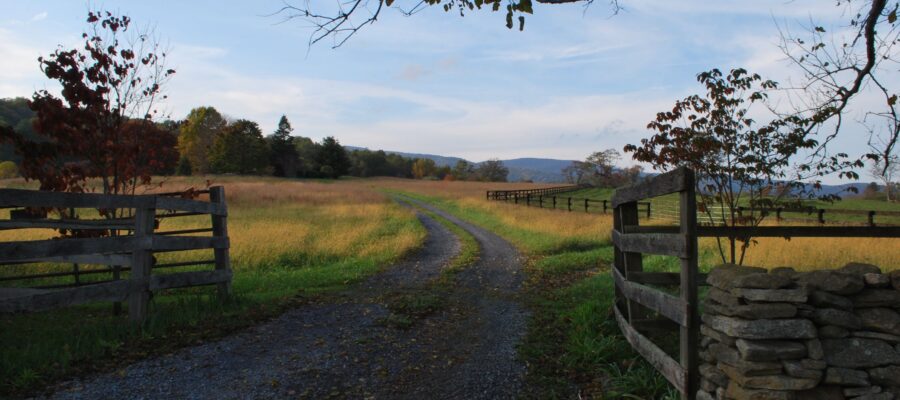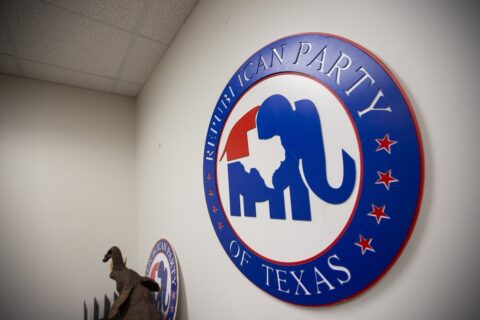I am providing neither legal advice nor investment advice to you. Do not take this as such. This is pure esoteric entertainment.
Robert Lewis Dabney is my favorite theologian, so I am happy to help Father Dabney secure his family’s future, take care of the land, and further the progress of humanity through charitable giving. Commenting on the first article, he wrote:
“Say, I buy 100 acres, build a family conclave, use 50 acres, the rest I conserve. Price of the land conserved $500,000 . My five children all build houses and are owners of the entirety of all the property since we form an LLC. We all can now reduce our tax burden and donate X amount to a charitable entity.”
Let me recast the scenario a bit to narrow the topics for discussion to something manageable for the space allotted.
Charles and Elizabeth Dabney, and their five children (“Dabney’s”), purchased 100 acres (“Godacre”) in November, 2019. They had the foresight at the time to form a limited liability company (“Landco”) in which to purchase Godacre for $500,000. Charles and Elizabeth want to stay in their BigCity condo for now, but the grown children all want to live on Godacre. They would all like to steward this beautiful land by conserving it, and would also like to help their fellow man through contributions to charity. They have both conservation and charitable intent. They have seen several granite outcroppings throughout the property, which happens to lie within a quarter of a mile from a rail line, and about 3 miles from an Interstate. Godacre is situated about an hour from three cities with 500,000 or more inhabitants, all of which are building roads and repairing buildings after the riots, and adding housing for the growing market.
Is this situation favorable for a conservation easement, and if so, would it make sense to invite others to participate (syndicate)?
If only five families want to live on Godacre, there is probably no need to split the land between conservation and non-conservation. Doing that can create some complications. On conserved land, the Dabney’s can build a limited number of houses, with a few restraints on how they are built. Generally, they will need to have gravel driveways, so the percentage area of non-permeable surfaces is kept to a minimum. Some concrete skirting outside the garage, and for sidewalks around the houses will probably be okay. Ultimately, the Dabney’s will work closely with the donee land trust, since the land trust will be the party tasked with enforcing the easement. A 30,000 sq.ft. party palace with multi-level infinity pools and tennis and basketball courts and a drag strip probably won’t be in keeping with the conservation purpose, though.
If the five children do not want any restrictions on the land they occupy, then partition is an option. Be aware, however, that if land adjacent to the conserved land is owned by the same owners, then any increase in the value of that land resulting from the easement on the conserved parcel, will reduce the value of the conservation easement. For example, if the children want to build a high-end old folks’ home on 15 acres, the adjacent 85 conserved acres may raise the value of those 15 acres significantly, and that increased value will correspondingly reduce the value of the conservation easement value. Not the end of the world, and there may be some work-arounds available, but it is a rule they need to keep in mind (the “contiguous property” rule). If they just want to occupy and use the conserved land, and they are not looking to maximize marketable value on the occupied land, it may be best to just keep it all together, and live with the pretty reasonable (but real) restraints that accompany the conservation easement.
Also, if the “conservation purpose” of the land is to conserve beautiful vistas of the ocean (or the mountains) visible from a major public road, for example, then they would not be able to build in such a way that the vista would be obstructed. There are many conservation purposes, such as “open space,” or “sensitive habitat.” Again, these are all surmountable issues, but the Dabney’s will need to keep them in mind. Light and sustainable agriculture is generally permissible with some qualifications. For timbering, for example, the Dabney’s would need to follow local best management practices (“BMP’s”). They just need to be prepared to consult with the land trust on things they want to do in order to avoid any misunderstandings on the front end.
In February of 2020, the family decides it wants to proceed with the possibility of a conservation easement. They are prepared for the upfront costs (between $150k and $250k, usually). After some initial exploration by geologists, it looks like they have a goodly amount of granite in the ground, and overburden across the property is between 10 ft. to about 40 ft. They are located near enough to rail and major roads, as well as within 100 miles of major markets, that a mining operation could reasonably be the highest and best use. They continue the process with mining consultants, qualified appraisers, and researching the local laws that would affect locating a mine on Godacre. It appears that their conservation easement value may come in at around $30 million.
The Dabney’s have a good income from royalties off the sale of son Robert’s Defense of Virginia and the South, which has recently increased in popularity and demand, but not enough to use the full $30 million of charitable contribution deduction, even accounting for 5 years of carry-forward. They consider syndicating, to allow other conservation and charitably minded investors to participate in deciding what to do with the land. Ultimately, the owners of the LLC will have the decision, based on their on their pro rata ownership interest, on what to do with the land. That is absolutely necessary, and every investor must know that coming in, and the Dabney’s must be at peace with that. If they don’t like the vote, they can always look to acquire new land. There must be a genuine, legitimate possibility that the owners will vote to either 1) Hold the land for now and not do anything, 2) Conserve the land, or 3) Pursue development, in this case a granite mining operation.
If they have not already (and they should have), they absolutely must retain legal counsel now, because at this point a myriad of laws (taxation and securities, among others) create a treacherous legal minefield with danger on every side. The Dabney’s are not afraid, but they are prudent. They know not to pay any of their consultants based upon what they tell them about value. The judgment of the consultants must at all times be completely independent, and they must be paid without reference to whether the Dabney’s like their conclusions or not.
Everyone agrees that the conservation value is good, and that the “conservation purpose” of the land is solid. There is a real public benefit to conserving this land, according to the experts, who will be prepared to testify on audit, if need be. This will be thoroughly substantiated by the experts’ reports. Their potential donee land trust has finished its baseline documentation reporting (“BDR”), and they are willing to accept the easement. At this point, the Dabney’s’ legal counsel prepares the documentation for syndicating (subscription agreements, private placement memorandum, operating agreement, other corporate docs, ballots, and so forth), and either the Dabney’s themselves, or someone helping them (this is another large topic worthy of separate discussion), begin looking for investors to join them in owning Landco.
In October of 2020, they have enough investors pledging about 8.2 million to purchase member interests in Landco. The Dabney’s themselves will retain some ownership, as well. They cannot close the syndication and contribution of the conservation easement to the land trust until December of 2020. If they do so earlier, they will be limited to their basis in the property as the permitted conservation easement value.
In December, at closing, investor funds are wired to escrow, everyone who worked on the project is paid, the $1 million audit defense fund is established, and the balance is distributed to the Dabney’s in exchange for most of their ownership interests. A majority of the new owners vote to conserve the property along with the Dabney’s. The conservation easement deed is contributed to the land trust, which records the deed. The LLC also contributes (tax deductibly if done properly) an additional $100k to the land trust, to maintain the easement and pay for enforcement actions, if necessary. On April 2021’s tax return, the value of the charitable contribution of the conservation easement passes through to the respective owners on a pro rata basis. Currently, they can use it to reduce their adjusted gross income by up to 50% (assuming things beyond the scope of this article).
The five occupying Dabney families submit their plans for home construction and for timbering 30 acres to the land trust, which voices a couple of concerns that the Dabney’s respond to satisfactorily to the land trust. They then build and use the proceeds from the timbering to secure construction loans. They contribute $2 million of the money they generated at syndication to the 501(c)(8) fraternal organization of which they are members, which goes towards helping men who have been fired from their jobs, or families who cannot afford private education, or families who cannot afford to homeschool if Mom stays home, or microfinance needs (for new business startup costs), or fire insurance, or home loans, or healthcare needs of other members of the fraternal lodge.
And the beautiful part: They use some of the proceeds to find new land on which to do this all over again in a couple of years. Dixie stays a little more beautiful, much good is accomplished, the Dabney family and other families with a common bond with the Dabney’s strengthen their brotherhood by taking care of each other, and the Dabney’s and their investors do not pay any taxes that they do not owe. In a few years, the Dabneys buy back the shares of the LLC from the earlier investors, and distribute the audit defense fund (if it wasn’t used). Robert releases new books, and the world is a better place.
-By Dixie Anon

O I’m a good old rebel, now that’s just what I am. For this “fair land of freedom” I do not care at all. I’m glad I fit against it, I only wish we’d won, And I don’t want no pardon for anything I done.






Living without a drag strip will be a hardship, but for the greater good, one may be able to live thusly.
Great article! We need articles that touch in areas most of us are unfamiliar.